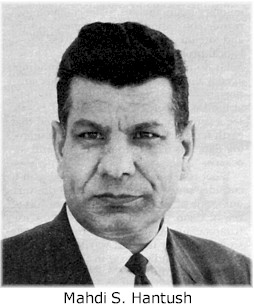Hantush and Jacob Step Drawdown Test Solution for Leaky Confined Aquifers
- Assumptions
- Equations
- Data requirements
- Solution options
- Estimated parameters
- Curve matching tips
- Example
- References
Related Solution Methods
Additional Topics

 Hantush and Jacob (1955) developed a mathematical solution for determining the hydraulic properties of leaky confined aquifers. Hantush (1961a, b) subsequently introduced equations for partially penetrating wells.
Hantush and Jacob (1955) developed a mathematical solution for determining the hydraulic properties of leaky confined aquifers. Hantush (1961a, b) subsequently introduced equations for partially penetrating wells.
For step-drawdown tests, the Hantush and Jacob solution can be modified to include linear and nonlinear well losses in the pumping well (Jacob 1947; Rorabaugh 1953; Ramey 1982). Analysis involves matching a curve to drawdown data collected during a step-drawdown test.
Assumptions
- aquifer has infinite areal extent
- aquifer is homogeneous, isotropic and of uniform thickness
- pumping well is fully or partially penetrating
- aquifer is leaky confined
- flow is unsteady
- water is released instantaneously from storage with decline of hydraulic head
- diameter of pumping well is very small so that storage in the well can be neglected
- aquitards have infinite areal extent, uniform vertical hydraulic conductivity and uniform thickness
- aquitards are overlain or underlain by an infinite constant-head plane source
- aquitards are incompressible (no storage)
- flow in the aquitards is vertical
Equations
The Hantush and Jacob model for a partially penetrating pumping well in an anisotropic leaky confined aquifer, adapted for step-drawdown tests to include linear and nonlinear well loss, is given by the following equation:
where
- is aquifer thickness [L]
- is nonlinear well loss coefficient [TP/L3P-1]
- is the depth to the top of pumping well screen [L]
- is the radial (horizontal) hydraulic conductivity [L/T]
- is the vertical hydraulic conductivity [L/T]
- is the depth to the bottom of pumping well screen [L]
- is pumping rate [L³/T]
- is well radius [L]
- is drawdown in the pumped well [L]
- is storativity [dimensionless]
- is wellbore skin factor [dimensionless]
- is elapsed time since start of pumping [T]
- is transmissivity [L²/T]
- is the Hantush and Jacob well function for leaky confined aquifers [dimensionless]
The exponent, , in the nonlinear well loss term, , is generally taken to be 2 as originally proposed by Jacob (1947); however, Rorabaugh (1953) postulated that may range between 1.5 and 3.5.
Data Requirements
- pumping and observation well locations
- pumping rate(s)
- observation well measurements (time and displacement)
- partial penetration depths (optional)
- saturated thickness (for partially penetrating wells)
- hydraulic conductivity anisotropy ratio (for partially penetrating wells)
Solution Options
- variable pumping rates
- multiple pumping wells
- multiple observation wells
- partially penetrating pumping and observation wells
- boundaries
Estimated Parameters
- (transmissivity)
- (storativity)
- (leakage parameter)
- (wellbore skin factor)
- (nonlinear well loss coefficient)
- (nonlinear well loss exponent)
Curve Matching Tips
- Use the Cooper and Jacob (1946) solution to obtain preliminary estimates of aquifer properties.
- Choose Match>Visual to perform visual curve matching using the procedure for type curve solutions.
- Use active type curves for more effective visual matching with variable-rate pumping tests.
- Select values of from the Family and Curve drop-down lists on the toolbar.
- Use parameter tweaking to perform visual curve matching and sensitivity analysis.
- Perform visual curve matching prior to automatic estimation to obtain reasonable starting values for the aquifer properties.
- Due to correlation in the equations between (storativity) and (wellbore skin factor), estimate either or for a single-well test but not both as the same time.
Example

References
Hantush, M.S. and C.E. Jacob, 1955. Non-steady radial flow in an infinite leaky aquifer, Am. Geophys. Union Trans., vol. 36, no. 1, pp. 95-100.
Jacob, C.E., 1947. Drawdown test to determine effective radius of artesian well, Trans. Amer. Soc. of Civil Engrs., vol. 112, paper 2321, pp. 1047-1064.
Ramey, H.J., 1982. Well-loss function and the skin effect: A review. In: Narasimhan, T.N. (ed.) Recent trends in hydrogeology, Geol. Soc. Am., special paper 189, pp. 265-271.
Rorabaugh, M.J., 1953. Graphical and theoretical analysis of step-drawdown test of artesian well, Proc. Amer. Soc. Civil Engrs., vol. 79, separate no. 362, 23 pp.
Bear, J., 1979. Hydraulics of Groundwater, McGraw-Hill, New York, 569p.